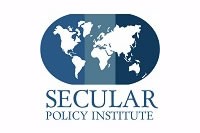Meditation 1353
Supreme Court Fractures Church/State Separation.
by: Jason Frye
Reprinted from The Secular Policy Institute newsletter
Your thoughts on this Meditation are welcome. Please sign in to the discussion forum below, or alternatively, use the contact page to provide your comments for publication.
 The United States Supreme Court has struck a blow to secular governance in America.
The United States Supreme Court has struck a blow to secular governance in America.
To understand politics one must understand historical developments and recurrent cycles. This week’s U.S. Supreme Court case involving a Lutheran Church in the State of Missouri fighting for $20,000 from a public fund is at once another footnote in a broader global discussion on the role of religion in the scope of public life. On the other hand it is a major deviation from the path of American public fiduciary church-state separation commented upon in its early days by James Madison.
Three years before the United States ratified its constitution that enshrined church/state separation in both the body of the document (Article VI, Section 3) and the First Amendment, then Confederacy Congressman Madison penned a response to a bill before the legislature of his home state of Virginia. The “Bill Establishing a Provision for Teachers of the Christian Religion” was found by Madison to be of such an odious nature, that the future President penned the secular governance masterpiece “Memorial and Remonstrance Against Religious Assessments.” While Madison was railing against the problematic nature of only certain sects receiving government favor through public funds and its deleterious effects on civil society and liberty, his words have echoed through time as a fierce advocacy of government neutrality toward religion. Madison’s contention was that religion in its proper place was of private conscience and not public subsidy.
In the United States this discussion has advanced primarily between legislative bodies and courts largely between the First Amendment’s provisions of Religious Establishment and Religious Exercise. Religious Establish generally referring to the government advancing or inhibiting religion in general and Exercise more specifically to that of what is permissible for the people.
In 2012 the Trinity Lutheran Church of Columbia, Missouri claimed that being excluded from a public fund because of their religious identity violated their Free Exercise rights in that they would have had to choose between their faith or receiving a benefit that they would have otherwise been eligible for. Broadly speaking, in the U.S. federal court system there are three tiers of jurisdiction. In this case (Trinity Lutheran Church of Columbia Inc. v. Comer [2017]), the two lower court levels (district and appellate) sided with the state against the church. This is because the Missouri State Constitution explicitly forbade public funds being given directly to religious houses of worship (Article 1, Section 7). The U.S. Supreme Court however took up the case and overturned the prior decision.
By a 7-2 ruling (Justices Sotomayor & Ginsburg dissenting), the Court said that owing to a “play in the joints” of the First Amendment, to exclude Trinity Church from receiving the grant to resurface their pea-gravel playground with pour-rubber flooring “imposes a penalty on the free exercise of religion.” Saying that at times it is permissible for public funds to be associated with religious entities, the Court cited a 1947 Establishment case subsidizing the bussing of children to religious schools (Everson v. Board of Education) and a 2004 Exercise case permitting state scholarship funds to be distributed to those intending to use them on pursuing devotional theology tracts (Locke v. Davey).
While the majority in this week’s decision considered this an Exercise Clause case, Associate Justice Sonya Sotomayor delivered a powerful argument that this was better understood as a clear violation of the Establishment Clause. Sotomayor says that:
“To hear the Court tell it, this is a simple case about recycling tires to resurface a playground. The stakes are higher. This case is about nothing less than the relationship between religious institutions and the civil government—that is, between church and state. The Court today profoundly changes that relationship by holding, for the first time, that the Constitution requires the government to provide public funds directly to a church. Its decision slights both our precedents and our history, and its reasoning weakens this country’s longstanding commitment to a separation of church and state beneficial to both.”
Sotomayor distinguished that while the Locke case was about a private individual pursuing private study amongst other scholars who had no hindrance upon the use of scholarship funds for either public or private schooling, Trinity Lutheran was a completely different animal. Sotomayor cited Trinity Lutheran’s mission statement of proselytizing and saying that a component of the church’s mission fulfilling activities and thus inseparable from the government advancing religion. Sotomayor ends her dissent by saying that the Court’s decision “leads us instead to a place where separation of church and state is a constitutional slogan, not a constitutional commitment.”
While writing the majority opinion, Chief Justice John Roberts flippantly said that the consequences to the contrary would have probably “resulted in a few skinned knees;” the crack in the wall of separation is far more concerning than what can be cured by a bandaid, Neosporin, and mother’s booboo kiss. This is a critical undermining of established church state separation at a time when this essential buffer is under attack at an increased speed by an alarming rate.
This is why the Secular Policy Institute is necessary, we monitor these situations and then research and offer a deeper, broader explanation. Then we take our findings and with the help of our coalition members advocate our position to those steering the wheels of power. We need your help to expand our efforts. Please join in this effort by making a donation.
Have your say...
Please take a moment to share your thoughts, pro and con, on this Meditation.
comments powered by Disqus
